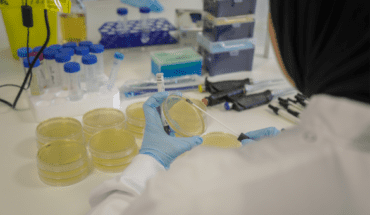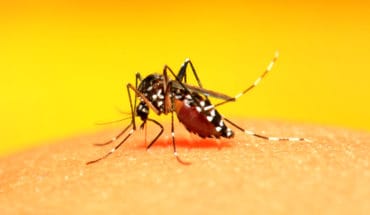One in three UK patients face deadly six-month wait for accurate diagnosis of sarcoma cancer, charity Sarcoma UK warns during Sarcoma Awareness Week 29th June to 5th July 2020.
Poor awareness of the symptoms of one of the least understood forms of cancer among the public and healthcare professionals, made worse by a complex diagnostic pathway, is leading to a ‘perfect storm’ of delays to diagnosis that is devastating lives, a new report launched today reveals.
Demand Early Diagnosis, Save Lives, commissioned by the national charity Sarcoma UK reveals how, even prior to the Covid-19 pandemic, one in three (30%) sarcoma patients in the UK waited at least six months from first speaking to a healthcare professional to being correctly diagnosed. Additionally, one in six (17%) patients who had consulted a healthcare professional waited more than a year before receiving an accurate diagnosis.
Lauren Phillips tragically lost her father in June 2019 to a type of sarcoma called clear cell sarcoma, less than two months after he was diagnosed. He died aged 47. Lauren says: ‘Sarcoma is a silent killer. They misdiagnosed my dad with various other things before they realised what was going on. If more people were aware of this cancer and he was diagnosed quicker, maybe the outcome would have been different for my dad. Sarcoma needs to be taken far more seriously. It is rare, aggressive and overlooked by a lot of people. That’s not good enough, things need to change.’
The current pandemic is only adding to an already complex situation when it comes to cancers in general. With fewer people visiting their GP, April 2020 saw a drop of 60% in the number of people in England assessed by a cancer doctor compared to the same month in 20191. That same month saw a similar fall of 60% in the number of sarcoma patients referred to a sarcoma specialist through the two-week wait referral system2.
Sarcoma is an uncommon cancer of the bone and soft tissue that can develop in almost any part of the body. Around 15 people a day are diagnosed with sarcoma in the UK, though national awareness of the disease is poor, with three quarters of UK adults not knowing what sarcoma is.3
Richard Davidson, Chief Executive of Sarcoma UK, says: ‘Put simply, late diagnosis costs lives. Being diagnosed with any cancer is an isolating experience, made worse for sarcoma patients as they often have to wait agonisingly long times for a diagnosis of a cancer that has such limited treatment options currently.’
Although GPs, often the gateway to a patient’s diagnosis, may see hundreds of benign tumours during their working lifetime, they might only expect to see one or two patients with bone or soft tissue sarcomas in the same timeframe.4 Other primary care professionals may see even fewer.
Sarcoma patients bear the brunt of poor awareness, with a third (35%) having to see a healthcare professional more than three times before they are referred for further tests. What’s more, four in ten patients were told at their first appointment with a healthcare professional that their symptoms were not serious, or were started on a treatment for another condition.
‘What the report highlights is not just the need to improve awareness of the symptoms of sarcoma, but education for healthcare professionals around the correct referral path to help make sure that patients with suspected sarcoma reach the right services as quickly as possible,’ continues Sarcoma UK’s Richard Davidson.
There are additional hurdles faced by sarcoma patients before reaching their correct diagnosis. An inaccurate interpretation of scan results can lead to the wrong diagnosis and potentially no onward referral. When patient care is not managed by specialists, the chances of sarcoma being incorrectly diagnosed as benign increases.5 Sarcoma’s vague symptoms can often mean a patient can be referred multiple times, and then return to their GP with no onward action.
Patients with suspected sarcomas ought to be referred to one of 16 specialist sarcoma centres across the UK. Being treated by a non-specialised team not only increases the risk of local recurrence but also smaller (surgical) margins, meaning that the sarcoma is more likely to come back.6 This can be down to poorly planned biopsies or surgeries by non-sarcoma specialists.7
Additional findings from the report include:
- One in seven patients waited more than six months from the time they first thought something might be wrong until they went to see a GP, nurse or sought help at A&E.
- A quarter of 16 to 24-year-olds waited more than a year after they first noticed symptoms before visiting a healthcare professional.
- Of those that said they had heard of sarcoma (25% of respondents), nearly a third (29%) had no idea of what the symptoms of sarcoma are.
The report comes at the start of Sarcoma Awareness Week (29 June to 5 July 2020) which aims to put the spotlight on this uncommon cancer. Sarcoma UK will release a full report on early diagnosis with recommendations and priorities in autumn 2020.
Demand Early Diagnosis, Save Lives is available on the Sarcoma UK website sarcoma.org.uk/#sarcomawontwait. Follow Sarcoma Awareness Week on social media through #SarcomaWontWait.
Sarcoma symptoms: Sarcoma symptoms can be vague – often a growing, possibly painful lump, or bone pain if it is in the bone. There are more than 100 sub-types of sarcoma, with no ‘one size fits all’ treatment for it, so catching sarcoma early is imperative, especially given that the current five-year survival rate is only 55%.
1 BBC News, 11 June 2020, ‘Coronavirus: Major disruption to cancer care revealed’, https://www.bbc.co.uk/news/health-52985446
2 As an average in England for the month of April 2020 from the baseline, from NHS e-Referral Service (e-RS) open data dashboard https://digital.nhs.uk/dashboards/ers-open-data
3 The survey for Sarcoma UK was carried out online by YouGov Plc on 1-2 April 2020. Sample: 2,007 adults. The figures have been weighted and are representative of all GB adults (aged 18+). 4 NICE. Improving outcomes for people with sarcoma. (2006). Available at: https://www.nice.org.uk/guidance/csg9. (Accessed: 9th August 2019).
4 NICE. Improving outcomes for people with sarcoma. (2006). Available at: https://www.nice.org.uk/guidance/csg9. (Accessed: 9th August 2019).
5 Gerrand, C. Clinical guidelines for bone and soft tissue tumours. (2017).
6 Davis, A. M. et al. The impact of residual disease on local recurrence in patients treated by initial unplanned resection for soft tissue sarcoma of the extremity. J. Surg. Oncol. 66, 81–87 (1997).
7 Loong, H. H., Blay, J.-Y. & Munhoz, R. R. International Collaborations and Regional Challenges in Providing Specialist Multidisciplinary Sarcoma Care. Am. Soc. Clin. Oncol. Educ. Book 616–623 (2019) doi:10.1200/EDBK_239131.
- Gut microbiome could delay onset of type 1 diabetes - 3rd April 2025
- The da Vinci 5 Robot Is Set To Transform Bariatric Care: - 31st March 2025
- Beyond money: the hidden drivers fuelling child food insecurity - 31st March 2025






